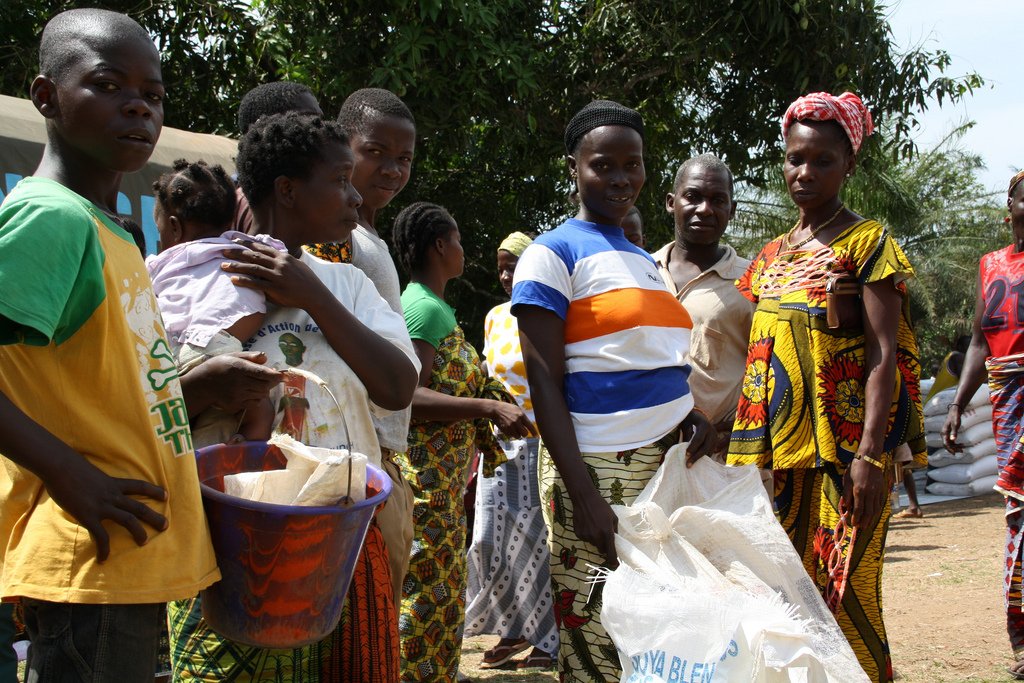Imagine a country of 125 million people, the eleventh most populous nation in the world. This is like no other country we know: its citizens are without employment or shelter and do not have the means to feed themselves or provide for their loved one. Too many of their women die giving birth and too few children are lucky enough to live until their 5th birthday. For those who do, especially girls, they do not attend school. They have been deprived of their dignity and live in insecurity. Above all, they are struggling to change their circumstances; they rely on charity to survive.
~ Introduction, “Too important to fail – addressing the humanitarian financing gap”
That is how a recent UN report “Too important to fail — addressing the humanitarian finance gap” describes the state of humanitarian need around the world. Created by the High-level panel on humanitarian financing ahead of the big World Humanitarian Summit in May, the report outlines the steps the international community can take to help bridge the gap between humanitarian supply and demand that has come to define humanitarian operations today.
It is clear that the status quo on humanitarian funding is no longer feasible. While gaps in what was needed have always existed, the current “megacrises” have created a system where what is lacking almost matches what is being given. The report lays this out in clear terms: despite a 12 fold increase in the amount of money being spent on global humanitarian operations over the last 15 years, the $25 billion being spent still leaves an estimated $15 billion shortfall from what is needed.
People in Need of Humanitarian Assistance
High profile crises like Syria garner the most international attention, but numerous other hotspots account for a good measure of this gap. From conflicts in the Central African Republic and South Sudan to political instability in Burundi and natural disasters in Nepal and India, the crises that avoid the international media spotlight and impact Western donor states less often receive less assistance. The end result is an image where the UN and other humanitarian organizations are seen as constantly holding their hands out asking for more, when in reality what they are begging for is barely enough to keep the world’s most vulnerable from slipping through increasing large cracks in the global safety net.
In many ways the 41 page report outlines what the UN hopes to accomplish at the World Humanitarian Summit. Building off the successful launch of the Sustainable Development Goals – which unlike its MDG predecessor, explicitly includes those in humanitarian crises settings as part of its mandate – the UN is looking to reinvent not just humanitarian financing at the Summit, but how humanitarian organizations work with donors, each other and the people they are attempting to serve. It’s an aspiring agenda that the report lays out in plain language for everyone to understand, but it remains to be seen how realistic such an ambitious goal is in the current political environment.
In particular, the issue of burden sharing takes up a significant portion of the report. Again, the effects of the war in Syria are instructive here, albeit that particular crisis is far from being the only one that shares this problem. As the neighboring states of Turkey, Jordan and Lebanon bear the economic and social burden of caring for millions of refugees, the reaction of European states who have seen a fraction of those displaced by conflict in Syria and Iraq enter its borders is that Syria’s neighbors are not doing enough to stem the tide of refugees trying to seek a better life elsewhere. Even within Europe, southern border states such as Italy and Greece are taking much brunt of the Syrian refugee crisis while other European states shirk the responsibility of burden sharing. Further afield there are positive signs of engagement from countries like Canada, but others such as the US and Australia remain hesitant to play a significant role in sharing the economic and political costs that any refugee crisis presents.
These are the real issues that will need to be overcome at the Summit later this year. The “Grand Bargain” proposed by the report where “donors would not simply give more but give better,” may address the financial aspect of humanitarian operations, but money cannot fix everything. It’s the political failure to address the root causes of these crises and its impacts – whether it be conflict, climate change or political and economic instability – that ensures the need for humanitarian aid only goes up with every passing year.
Right now that leaves 125 million people dependent on the kindness of others and the political interests of powerful states for basic survival, but if the UN fails to make headway on the ambitious agenda it laid out last week, in 2017 that number will almost certainly be higher.
